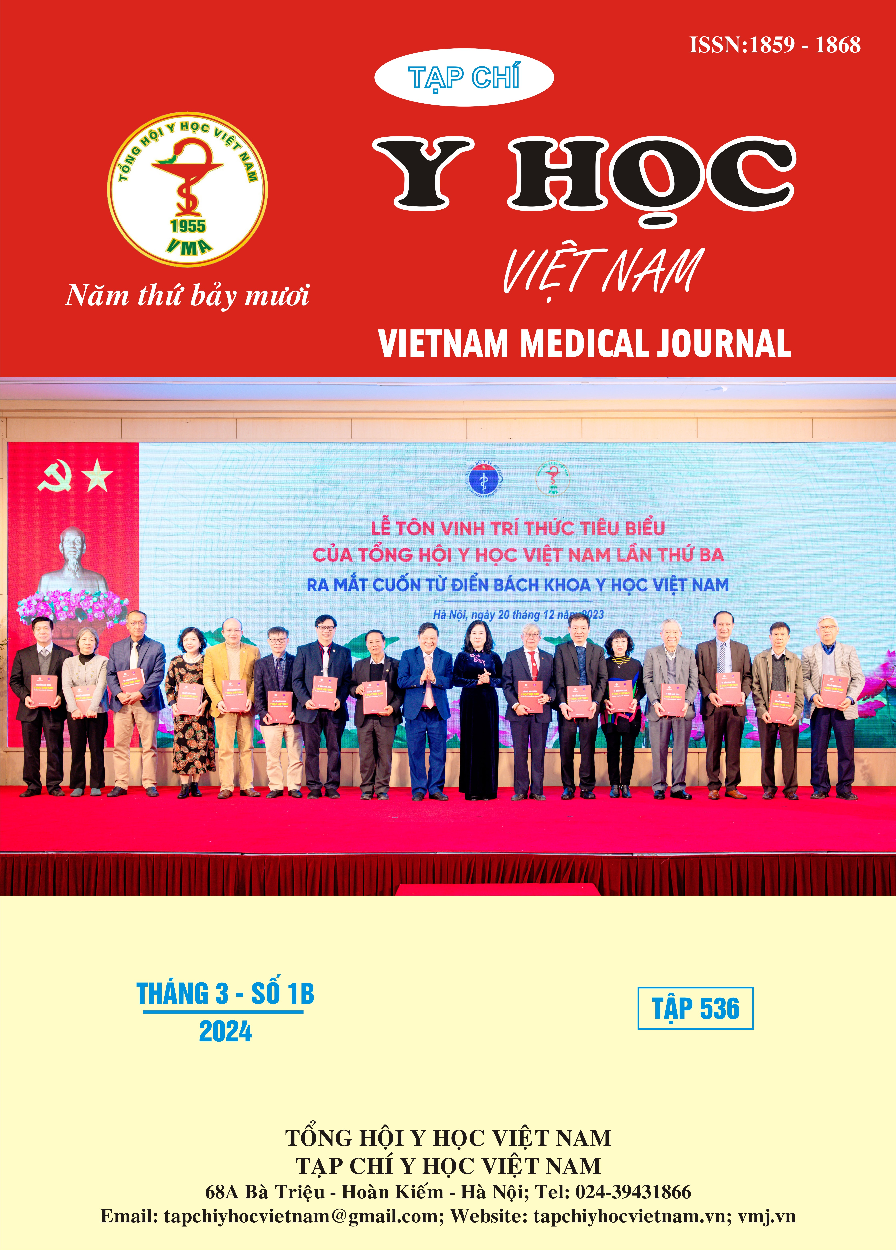CLINICAL AND SUBCLINICAL FEATURES OF IMMUNE CHECKPOINT INHIBITOR-RELATED PNEUMONITIS
Main Article Content
Abstract
Objectives: This study aimed to identify key clinical and subclinical characteristics of immune checkpoint inhibitor-related pneumonitis (ICI-P). Subjects and methods: We conducted a retrospective, cross-sectional study involving 10 patients diagnosed with ICI-P among 61 patients treated with ICI at Oncology-Hematology Department, Vinmec Times City international hospital in 2023. Results: ICI-P was identified in 10 patients in total of 61 patients (16%). The average age is 69 years old. 40% of patients have a history of lung disease and a history of thoracic radiation therapy. Average onset time after using 4.7 cycles of ICI medication. The most common clinical symptoms are cough, fever, and difficulty breathing. Ground-glass opacities was found in almost all cases (accounted for 90%), followed by consolidation lesions. There were 3 patients with grade 4 pneumonitis and no deaths (grade 5). On average, corticosteroid dose was 50 mg/kg prednisolone in grade 2 group and treatment duration was 5.4 weeks. In grade 3-4 group, the dose of corticosteroid was higher (75mg/kg prednisolone) and treatment duration was longer (7.2 weeks). Conclusions: ICI-pneumonitis is a serious complication, non-specific clinical symptoms, and requires long treatment duration. It is a challenge for clinicians requiring comprehensive skills to manage it.
Article Details
References
2. Luo W., Wang Z., Tian P., et al. (2018). Safety and tolerability of PD-1/PD-L1 inhibitors in the treatment of non-small cell lung cancer: a meta-analysis of randomized controlled trials. J Cancer Res Clin Oncol, 144(10), 1851–1859.
3. Reuss J.E., Suresh K., and Naidoo J. (2020). Checkpoint Inhibitor Pneumonitis: Mechanisms, Characteristics, Management Strategies, and Beyond. Curr Oncol Rep, 22(6), 56.
4. Nishino M., Giobbie-Hurder A., Hatabu H., et al. (2016). Incidence of Programmed Cell Death 1 Inhibitor-Related Pneumonitis in Patients With Advanced Cancer: A Systematic Review and Meta-analysis. JAMA Oncol, 2(12), 1607–1616.
5. Antonia S.J., Villegas A., Daniel D., et al. (2017). Durvalumab after Chemoradiotherapy in Stage III Non-Small-Cell Lung Cancer. N Engl J Med, 377(20), 1919–1929.
6. Atchley W.T., Alvarez C., Saxena-Beem S., et al. (2021). Immune Checkpoint Inhibitor-Related Pneumonitis in Lung Cancer. Chest, 160(2), 731–742.
7. Delaunay M., Cadranel J., Lusque A., et al. (2017). Immune-checkpoint inhibitors associated with interstitial lung disease in cancer patients. Eur Respir J, 50(2), 1700050.
8. Nishino M., Ramaiya N.H., Awad M.M., et al. (2016). PD-1 Inhibitor–Related Pneumonitis in Advanced Cancer Patients: Radiographic Patterns and Clinical Course. Clin Cancer Res, 22(24), 6051–6060.
9. Suresh K., Voong K.R., Shankar B., et al. (2018). Pneumonitis in Non-Small Cell Lung Cancer Patients Receiving Immune Checkpoint Immunotherapy: Incidence and Risk Factors. J Thorac Oncol Off Publ Int Assoc Study Lung Cancer, 13(12), 1930–1939.
10. Voong K.R., Hazell S.Z., Fu W., et al. (2019). Relationship Between Prior Radiotherapy and Checkpoint-Inhibitor Pneumonitis in Patients With Advanced Non-Small-Cell Lung Cancer. Clin Lung Cancer, 20(4), e470–e479.


